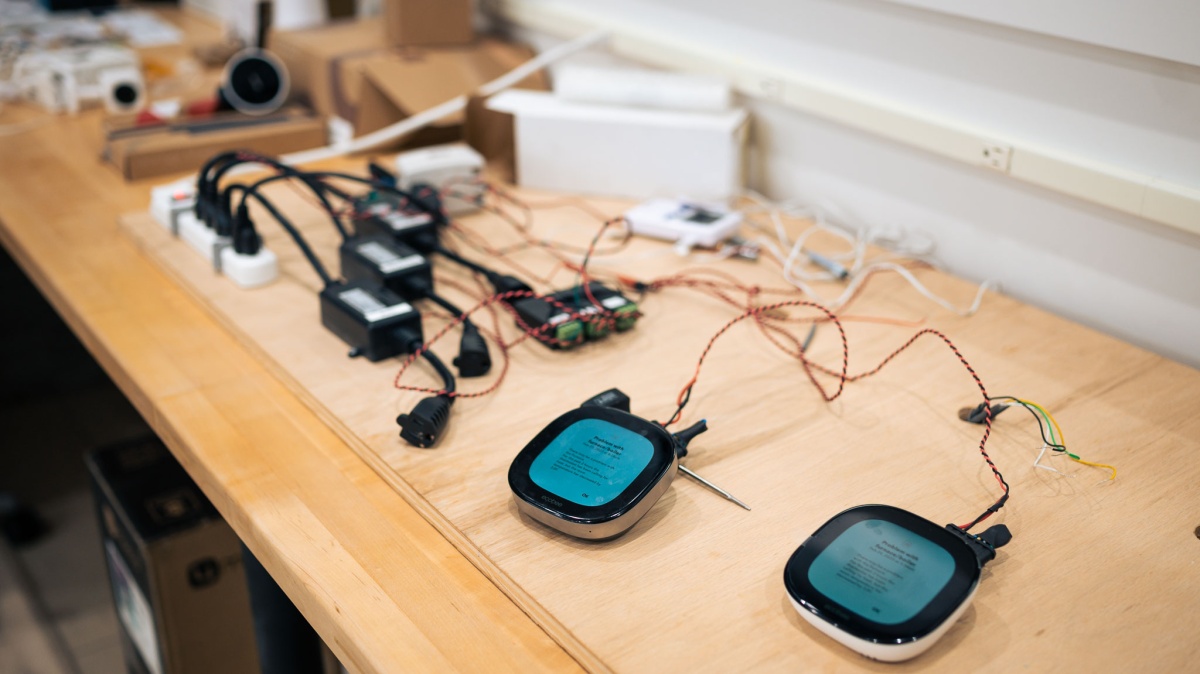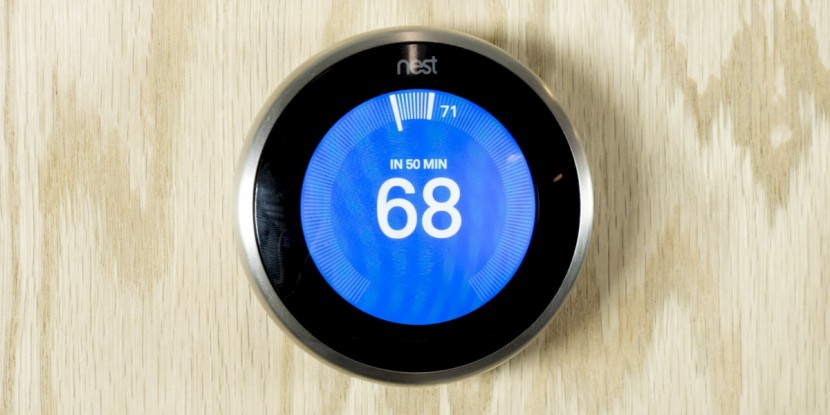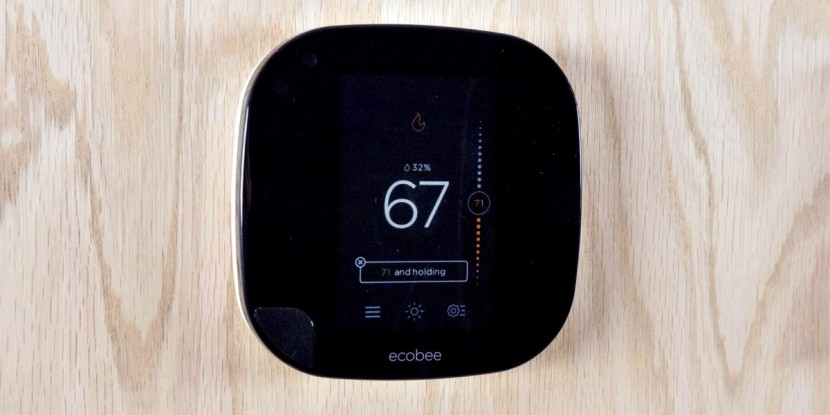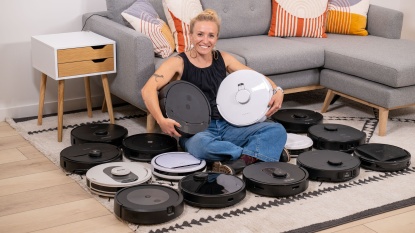The majority of homes will have at the very least one thermostat, with many modern homes having multiple spread throughout the house to control different zones. What is actually going on behind that dial or keypad? What makes a thermostat tick? Why would you ever want to upgrade to a smart thermostat? Will they really save you money?
For those energy-saving aficionados out there, this article may come at a bit of a disappointment. After delving through plenty of research on energy savings and sifting through the fine print of manufacturer's marketing claims, these products will not really save much more energy for those currently following the best practices with their current thermostat. However, these products can make it much easier to adhere to these guidelines.
While all of his may seem incredibly overwhelming, fear not dear reader! We have put together this guide to aid you in your quest to find the smartest thermostat, and alleviate the confusion that can come from navigating the world of HVAC systems.
Keep reading to find out the answers to all these questions, and more, or check out our review of thermostats for an in-depth, side-by-side comparison of specific models.
What Does a Thermostat Actually Do?
Almost all of us have used them….and most likely never really think about them. They simply are the magic box that we tell to make the house warmer or cooler. In reality, these devices simply measure the ambient temperature, compare it to the desired temperature you set, and turn on and off the heater or air conditioner accordingly. Early thermometers relied entirely on a bimetal strip (two-part metallic strip that would change shape based on its temperature) to turn on and off your heating equipment, and may have even had a mercury tilt-switch to make the electrical connection. As mercury is very bad — causing older thermostats to be considered toxic waste — newer thermostats rely almost exclusively on digital electronics to control the heating and cooling.
Types of Thermostats
In reality, you will essentially be limited to purchasing a programmable or a WiFi/Smart Thermostat. You will only find a single temperature model in an older house, or in the Smithsonian.
Single Temperature
These are the simplest types of thermostats currently available, and consequently the most inexpensive. Many people have these types of thermostats, one that only has a temperature hold feature. You simply input the desired temperature, and these will maintain the ambient temperature at the desired point.
Programmable
Programmable thermostats are one step up from the single temperature models. These products allow you to input a schedule to have the thermostat setback at various points throughout the day. A setback is when the temperatures is reduced from the normal, comfortable level to save energy, for example when the occupants of the home are sleeping or away. The opposite of a setback is a setup, where the temperature is set warmer than usually comfortable. Setbacks occur during the winter, while setups are for warm, summer days. The main differentiators among products in this class are the amount of customization that they offer. The most common are 7 day, 5-2 day, or 5-1-1 day schedules of setbacks/setups, allowing a different schedule each day, a work day and weekend day, and a workday and a unique Saturday and Sunday schedule.
WiFi/Smart Thermostats
Smart, or WiFi thermostats, in principle, function the same as a programmable thermostat but with some additional features. All products in this class offer remote access capabilities, meaning you can adjust the temperature, check the current temperature in your home, and set a schedule from your smartphone or desktop over an internet connection. These products can also have a myriad of other features, such as integrating with smart home systems, geofencing, and adaptive learning behavior.
Why Buy a Thermostat?
You may be wondering why exactly one would need a thermostat. There are a decent number of benefits to these products, but it really can be summed up by two simple questions: Will these save me money, and will they make my life easier?
It Can Save You Money, But Maybe Not As Much As You Might Hope
Ideally a thermostat should both improve your standard of life, as well as be more energy-efficient. This is green all around — better for the environment, and better for your wallet. While the marketing for these products may lead you to believe that it is a foregone conclusion these products will save money and even pay for themselves, it's necessary to understand a bit of the history (and controversy!) surrounding programmable thermostats.
A programmable thermostat saves you money by maintaining a schedule of setups and setbacks, usually when the occupants of the home are away, or sleeping, to reduce the energy consumed. Originally, these were touted as a product that could cause significant reductions to your heating and cooling bills, even earning an Energy Star certification. However, in actual practice and field studies, these have been shown to not be as effective as originally claimed, and in 2009 the EPA decided to "sunset the programmable thermostat specification". However, they do state that they “recognize the potential for programmable thermostats to save significant amounts of energy.” Multiple field studies, like this one by the American Council for an Energy-Efficient Economy, found that installation of a programmable thermostat could result in no benefit, or even increased energy usage.
This leaves us in a conundrum: Programmable thermostats — and their technologically advanced cousins, smart thermostats — theoretically should cause a significant reduction in energy use, and definitely can in some cases, but there is no guarantee that by simply installing a programmable thermostat it will save you money. It is your current behavior, and how it changes upon the installation of a new thermostat that actually determines the amount of energy saved. This is the crux of the argument that caused the loss of the Energy Star certification. Simply installing any thermostat isn't enough to save energy, but the use of the thermostat that determines the energy, and thus, money saved. This leads us to the main takeaway when considering whether or not to purchase a smart thermostat:
If you already adjust the thermostat to a temperature that uses less energy when the house is unoccupied or the occupants are sleeping, either manually or with a schedule, the majority of the energy savings you can accomplish have most likely already been achieved
Therefore, if you already have a programmable thermostat and use it according to these guidelines, we would not recommend upgrading to a smart thermostat solely to reduce energy usage.
The majority of the marketing claims for the massive energy savings of smart thermostats by their manufacturer's seem to be based on the assumption of replacing a constant temperature thermostat that is never altered to reduce energy usage. For those with a constant-temperature thermostat, transitioning to a smart thermostat is definitely something to consider as the advertised savings may then be realized. While energy savings alone may not justify the purchase of one of these products, there are many other features that may. Keep reading to find out what these are and whether or not they may be worth it to you.
How Much Is Convenience Worth To You?
While the energy savings of these products is much more situationally dependent, there are some real, universal benefits that exist. It can be substantially easier to set up a schedule through the app than on older programmable thermostats, and being able to check and set the temperature remotely as well as track energy usage are all extremely beneficial and are well worth the additional cost to many people. Now it's time to help you figure out which smart thermostat will work best for you.
Step 1: What Kind Of Home Will Your New Thermostat Be In?
Multiple Rooms
While we are aware that the majority of people live in homes with multiple rooms, what we are most concerned with here is if there is usually a large discrepancy between different rooms in your home. Thermostats regulate the temperature of the home based on the temperature they read. The majority of products only read the temperature where they are installed. This can be problematic if the thermostat is installed in an area that is not representative of the entire house, leading to some rooms being substantially warmer or colder than is desirable. If this is the case for your home, then you most likely would have already experienced it with your current HVAC setup, and is most likely caused by the thermostat being installed in an out of the way location, or somewhere that receives direct sunlight, causing a false reading.
If this is the case, then there are two options available: Change the location of the thermostat install (usually requiring a professional), or look for a model that has remote sensors.
These sensors could come with the thermostat, like the Ecobee4, or have the capability to connect with 3rd party sensors, like the Nest Learning Thermostat. If the temperature where the thermostat currently resides is reflective of the rest of the room, than most models will work.
Home Away From Home?
Many people may be interested in a smart thermostat merely to keep an eye on their house when they are not around. This can be a great tool for a second-home owner, someone who travels frequently, or a vacation home rental, particularly those in cold climates. A malfunctioning heating system, or a vacation rental tenant turning the heat off, leading to a burst pipe can cause an extraordinary amount damage, easily leading to a catastrophe. This crisis could easily be averted by a smart thermostat, and its ability to remotely monitor the temperature. For homes that take a long time to heat up or cool down, smarter thermostats will learn how long it takes and turn on your HVAC system so your home is always the perfect temperature right when you walk in the door. This is also a great feature for vacation rentals, ensuring your guests are comfortable the moment they arrive. If these are some of the main reasons you are looking at a smart thermostat, then we would recommend a product that offers good connectivity at the lowest cost.
Multiple Zones
Many modern house have the HVAC system split into multiple zones, with a separate thermostat controlling each zone. Unfortunately, none of the top-performing thermostats that we looked at are able to control multiple zones from a single thermostat. While smart thermostats do offer many additional benefits, they can be more expensive, with the cost quickly adding up with each additional thermostat. If this is the case, then we would recommend looking at our Best Buy award winner, especially as it can manage multiple thermostats from one app.
Step 2: Form or Function?
Many people have spent significant time and energy cultivating a certain look for their home, and a thermostat is something that will go in that home, and to work the most effectively, should be positioned where people most commonly congregate in the house. While we are not trying to imply that any of these models are not perfectly functional, we felt it was clear that two of the models had put particular emphasis on aesthetic appeal.
Both Ecobee and Nest thermostats feature a sleek design, attractive look, and clearly have moved away from the traditional, boxy thermostat design. These are models that are worth paying particular attention to, especially the Nest with the many customizable base plates available to match different decoration schemes.
However, there is definitely an increased cost associated with these models, and it may force you to make a decision between features and aesthetics, and maintaining your budget.
Is There a Perfect Thermostat for Everyone?
Unfortunately, the short answer is no. It really boils down to if you are simply trying to keep an eye on your house when you aren't away, or if you are trying to make a fully-integrated, smart home. For the former, then getting a budget model will be more than sufficient. For the latter, looking at the highest-end models will offer the most versatility and interconnectivity with other smart home products. Nest also has a "Works with Nest" program, where they track which smart products integrate with Nest, such as Amazon Alexa, Wink Smart Hub, or Phillips Hue lightbulbs, just to name a few.








